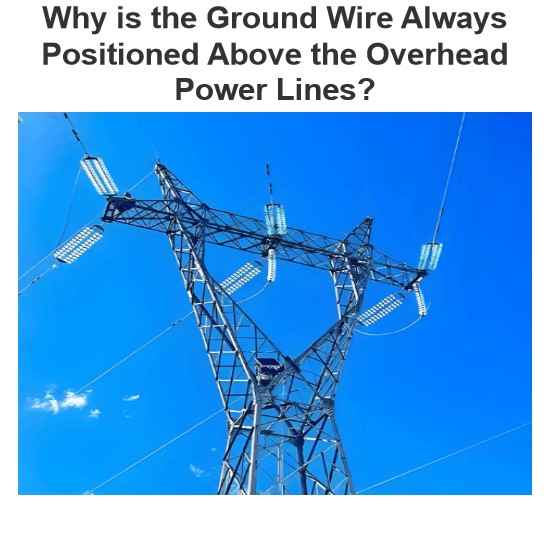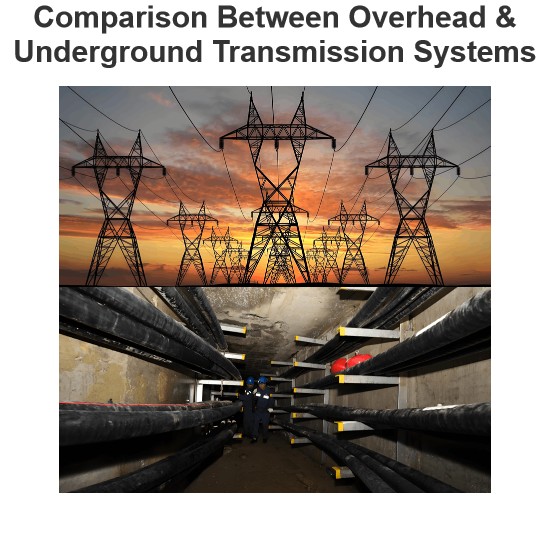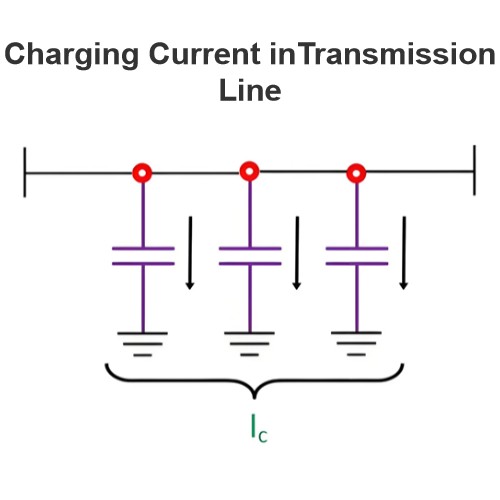Overhead Ground Wire or Earth Wire
Definition of Overhead Earth Wire (Ground Wire)
An overhead earth wire, also known as a ground wire, is a crucial component of lightning protection systems. It consists of one or more conductors that are installed above the transmission line, stretching from one support structure to another. These wires are meticulously grounded at regular intervals along their length.
The primary function of the earth wire is to intercept direct lightning strikes that would otherwise target the phase conductors of the transmission line. By diverting the lightning current safely into the ground, it protects the critical electrical conductors from potential damage, thereby ensuring the uninterrupted operation of the power transmission system. It's important to note that while highly effective against lightning, the ground wire has no impact on mitigating switching surges, which are caused by different electrical phenomena within the power system.
When a lightning strike occurs at the mid - span of an earth wire, electrical waves are generated and propagate in opposite directions along the line. These waves eventually reach the adjacent transmission towers, which are designed to safely channel the electrical energy into the ground. However, the effectiveness of the earth wire hinges on a key factor: the resistance between the tower foot and the earth must be kept sufficiently low. A high resistance value can impede the efficient dissipation of the lightning current, reducing the earth wire's ability to protect the transmission line and potentially leading to electrical surges and equipment damage.
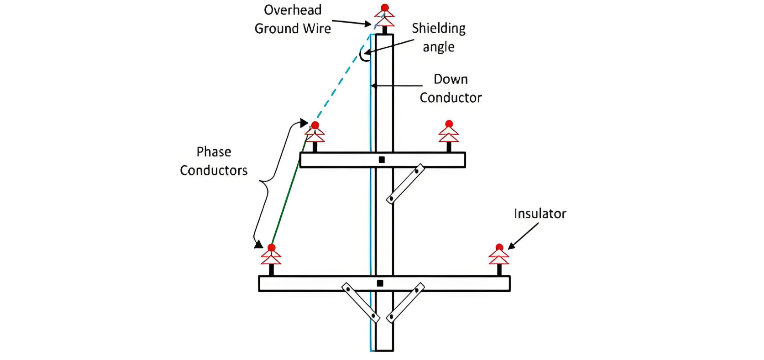
If the resistance between the tower foot and the earth is not low, and the earth wire or tower is struck by lightning, the lightning will induce an extremely high potential. This high potential can cause a flashover from the tower to one or more phase conductors. Such a phenomenon is known as back flashover.
Back flashover occurs specifically when the product of the tower's current and tower impedance exceeds the insulation levels of the transmission line. To mitigate this risk, one effective approach is to reduce the tower footing resistance. In areas with high soil resistivity, driven rods and counterpoises are commonly employed.
A counterpoise is a conductor buried in the ground, typically made of galvanized steel. For an overhead terminal, the counterpoise functions as a specialized ground terminal. Its role is to decrease the surge impedance of the ground connection and enhance the coupling between the ground wire and the conductor, thereby improving the overall lightning protection performance of the system.
In transmission lines, two main types of counterpoises are utilized: the parallel counterpoise and the radial counterpoise.
Parallel Counterpoise
The parallel counterpoise consists of one or more conductors laid underground along the entire length of the transmission line. These counterpoise lines are connected to the overhead earth wire at every tower and pole. This configuration helps to evenly distribute the electrical current during a lightning strike, reducing the potential for high - voltage build - up and minimizing the likelihood of back flashover.
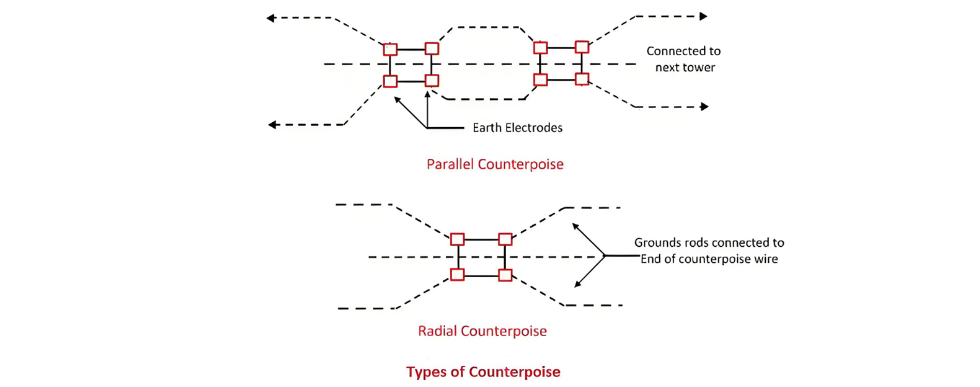
Radial Counterpoise
The radial counterpoise is characterized by a series of wires that extend outward in a radial pattern from the base of the tower legs. The specific quantity and length of these wires are carefully determined based on two critical factors: the geographical location of the tower and the prevailing soil conditions. These variables play a significant role in optimizing the counterpoise's effectiveness in reducing the tower footing resistance and enhancing the overall lightning protection of the transmission line.
Shielding or Protective Angle
The shielding or protective angle is defined as the angular measurement between the vertical alignment of the earth wire and the phase conductor that requires protection. Conventionally, this angle is measured as the angle formed between the vertical line passing through the earth wire and the line connecting the earth wire to the outermost phase conductor. This angle serves as a crucial parameter in the design and assessment of overhead transmission line lightning protection systems, as it directly influences the earth wire's ability to intercept lightning strikes and safeguard the phase conductors from potential damage.

Optimizing Shielding and Earth Wire Configurations
For optimal shielding against lightning strikes in overhead transmission lines, it is crucial to minimize the protective angle. Angles ranging between 20° and 30° are considered highly effective and safe for providing adequate protection to phase conductors. Engineers generally avoid setting the protective angle above 40°, as doing so significantly reduces the shielding efficiency and increases the risk of lightning directly striking the conductors.
In contemporary high - voltage power systems, which often feature conductors with wider spacing, a two - wire earth wire setup has become the norm. This configuration offers superior protection compared to traditional single - wire systems. The use of two earth wires not only enhances the overall coverage and interception capabilities against lightning but also brings several electrical advantages. For instance, the surge impedance of a two - wire earth system is lower, which allows for more efficient dissipation of lightning - induced electrical surges. Additionally, the presence of two wires increases the coupling effect between the earth wires and the phase conductors. This enhanced coupling helps to better balance electrical charges, further reducing the likelihood of overvoltages and improving the overall reliability and resilience of the high - voltage transmission infrastructure.
The Electricity Encyclopedia is dedicated to accelerating the dissemination and application of electricity knowledge and adding impetus to the development and innovation of the electricity industry.

